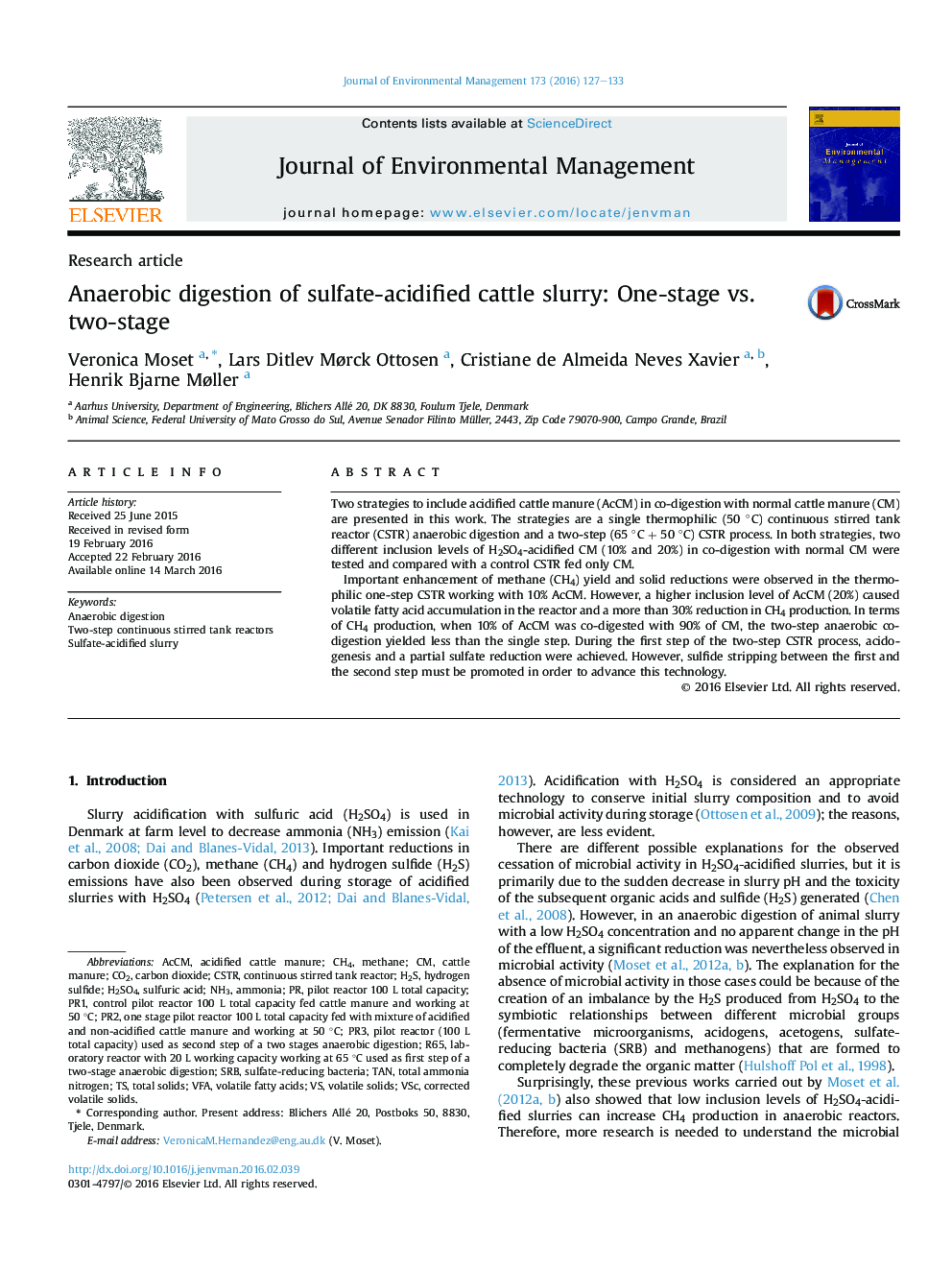| Article ID | Journal | Published Year | Pages | File Type |
|---|---|---|---|---|
| 1055380 | Journal of Environmental Management | 2016 | 7 Pages |
•Two inclusion levels of sulphate acidified cattle manure were digested.•One-step and two-steps anaerobic digestion of acidified manures were compared.•10% acidified manure promoted methane yield, 20% caused process inhibition.•During the first step, acidogenesis and a sulfate reduction were achieved.•Sulfide stripping after the first step must be promoted.
Two strategies to include acidified cattle manure (AcCM) in co-digestion with normal cattle manure (CM) are presented in this work. The strategies are a single thermophilic (50 °C) continuous stirred tank reactor (CSTR) anaerobic digestion and a two-step (65 °C + 50 °C) CSTR process. In both strategies, two different inclusion levels of H2SO4-acidified CM (10% and 20%) in co-digestion with normal CM were tested and compared with a control CSTR fed only CM.Important enhancement of methane (CH4) yield and solid reductions were observed in the thermophilic one-step CSTR working with 10% AcCM. However, a higher inclusion level of AcCM (20%) caused volatile fatty acid accumulation in the reactor and a more than 30% reduction in CH4 production. In terms of CH4 production, when 10% of AcCM was co-digested with 90% of CM, the two-step anaerobic co-digestion yielded less than the single step. During the first step of the two-step CSTR process, acidogenesis and a partial sulfate reduction were achieved. However, sulfide stripping between the first and the second step must be promoted in order to advance this technology.
